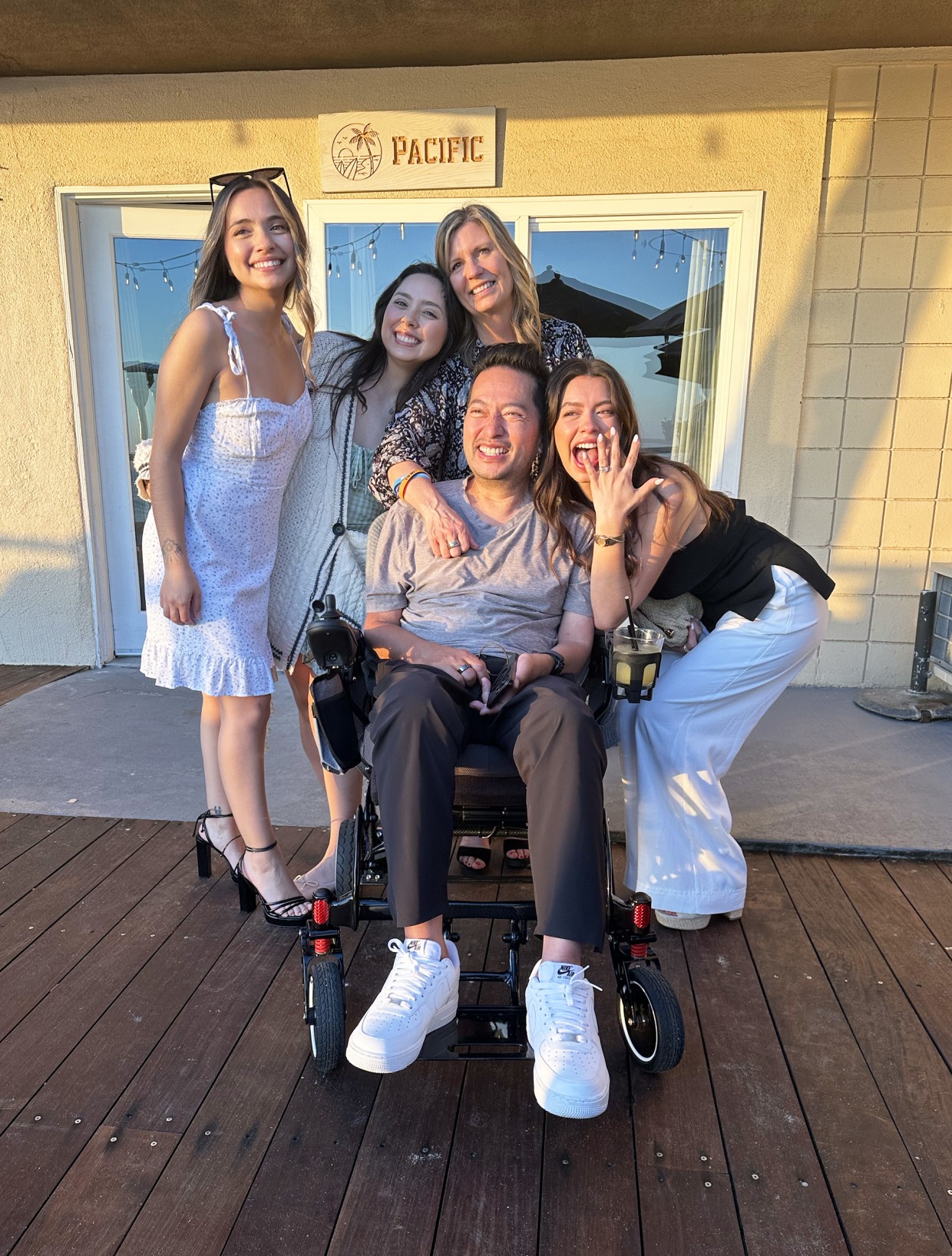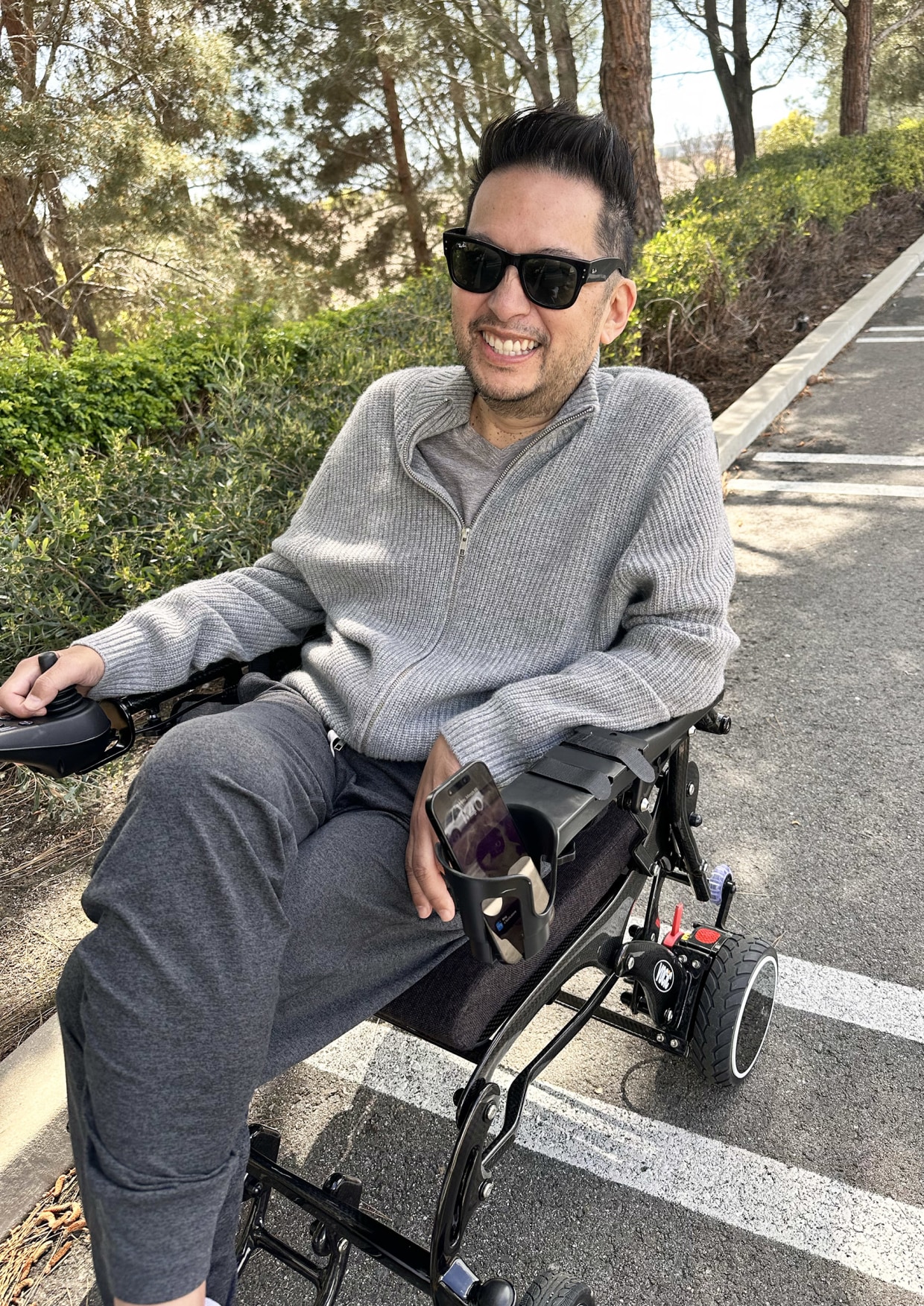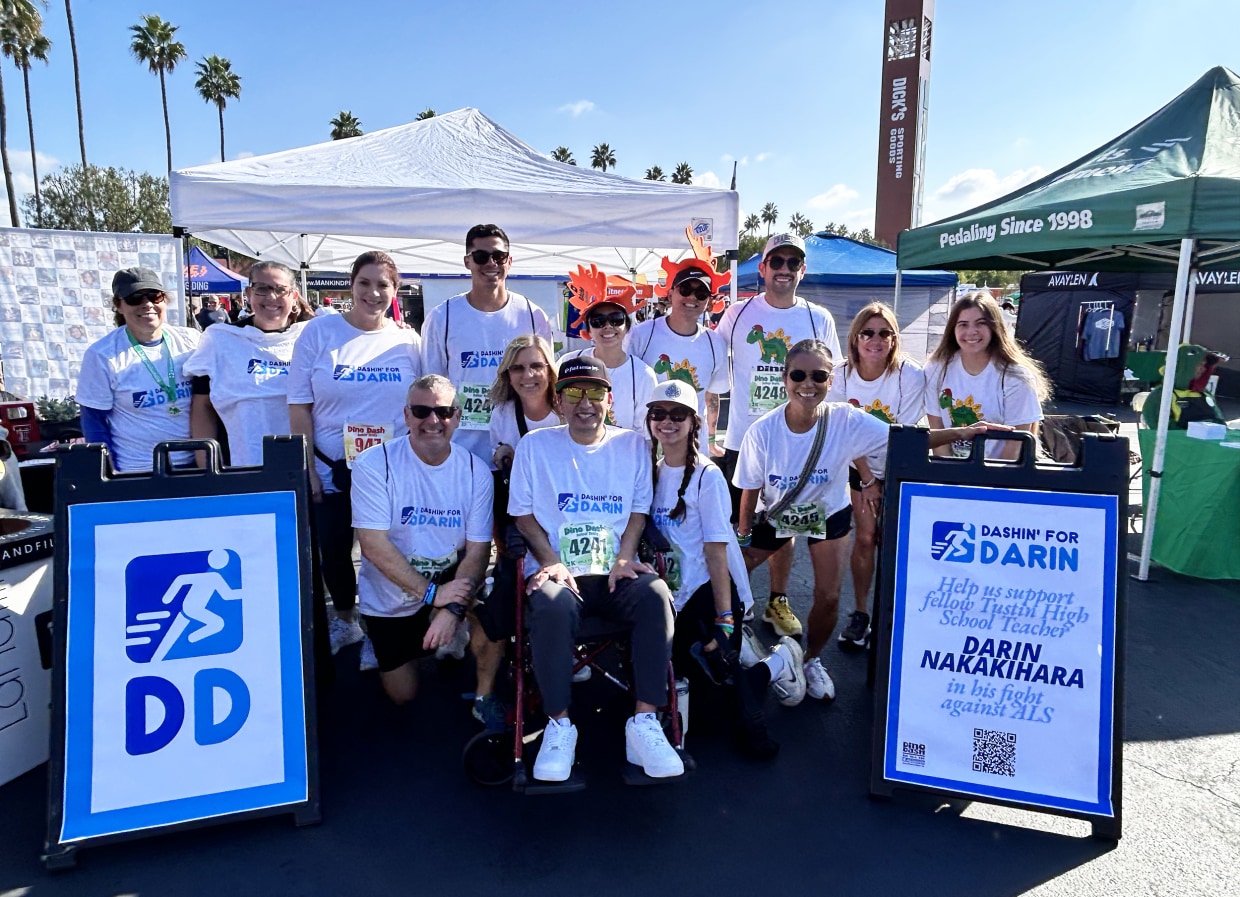Introduction to ALS
Darin Nakakihara doesn’t remember much from the day that changed his life. He left the doctor’s office and walked to his car. In the driver’s seat, he looked up the disease he was just diagnosed with, and all he can recall is seeing that the average life expectancy is two to five years. On Nov. 9, 2023, after nearly a year and a half of questions, worsening symptoms and misdiagnoses, Nakakihara learned he has amyotrophic lateral sclerosis, or ALS.
Documenting the Journey
He looked online for resources. There were support groups and he would eventually join an ALS clinic, but no one was documenting the day-to-day of the degenerative condition — the rapid changes in mobility and mentality — so he decided he’d be the one to do it. On social media, the 57-year-old has gained a following recording how ALS progresses. Now, even though speech and mobility are challenging, he’s still going, detailing the ways he struggles to feed and dress himself, how he maintains his faith, and his advice to others with the disease.
The Viral Video
In one viral post from May, Nakakihara shared side-by-side videos of himself, one from 2024 and another filmed a year later. In the 2025 video, his speech is changed, he’s in a wheelchair and he struggles with fatigue. His promise to his viewers: “I will try to never, ever make you feel bad.” Most accounts of ALS are depressing and daunting, he said in another video. “I’m not saying I want it to be sugarcoated,” but he takes the lows of ALS as they come, he said.
Finding Joy
The rest of the time, Nakakihara is trying to find joy. “I choose to live my life every day and live that life with joy and be thankful for the things I have and just be grateful for everything with that the Lord has blessed me with,” he said.
The First Signs
What is ALS?
ALS is a neurodegenerative condition that impacts the way nerve cells communicate with muscles, per the Cleveland Clinic. It causes progressive muscle weakness that affects how a person moves, speaks and breathes. In 90% of cases, ALS occurs randomly; in 10%, it’s inherited genetically. Nakakihara has no family history of ALS.
Initial Symptoms
It all started with his left foot in 2022. “My left foot wouldn’t go high enough,” he tells TODAY.com. He struggled to lift it over curbs, and as it dragged behind his right foot, he began tripping regularly. Nakakihara’s wife grew concerned and pressed him to see a doctor. The first neurologist told Nakakihara he was dehydrated. Immediately, Nakakihara and his wife pushed back. His wife advocated for more tests, which led to imaging that looked at Nakakihara’s head, upper spine and lumbar. A second neurologist determined he had cervical disc herniation for which he underwent surgery in June 2023.
Darin Nakakihara immediately shared the news with his wife and three daughters when he was diagnosed. (Courtesy Darin Nakakihara)
Living With ALS
Nakakihara thinks back to life before ALS fondly. He describes trips with his family to Disneyland, drinking wine and going out to dinner with his wife. A high school teacher, he used to vlog on YouTube about his career before going on medical leave. He remains committed to his faith but no longer plays guitar and bass for the church’s band. “That was a big part of my identity,” he says.
 Nakakihara’s youngest daughter is recently engaged and planning her October wedding. (Courtesy Darin Nakakihara)
Nakakihara’s youngest daughter is recently engaged and planning her October wedding. (Courtesy Darin Nakakihara)
Support System
Nakakihara is rarely alone. He has two caregivers who look after him four times a week, his wife works from home, and his three daughters come to see him regularly. The youngest, recently engaged, is planning her wedding for October 2025 so Nakakihara can be there. For some time, Nakakihara used on a cane, then a walker, and he’s now in a wheelchair most of the time. He can still speak, but his "hands are pretty much not working," so to text and make calls, he is able to connect his phone and computer, and operate them using a mouse and one finger on his right hand, which remains his strongest.
 Two years after his diagnosis, Darin Nakakihara is nearly always in a wheelchair. (Courtesy Darin Nakakihara)
Two years after his diagnosis, Darin Nakakihara is nearly always in a wheelchair. (Courtesy Darin Nakakihara)
Looking Ahead
Documenting his experiences has proven to be the outlet Nakakihara needs. In his videos, he’s vulnerable and honest, expressing his disappointment in the disease, what it’s doing to him and in the lack of treatment options. “This thing is 150 years old,” he says. “There’s no cure, there’s not even a treatment, and also there’s not even a test for it. They just rule out other things and it’s insane.” He longs for advancements in ALS research.

Conclusion
Until then, he’ll continue to “go find some joy,” a phrase that has become his enduring motto. “I just want people to know that we could be purposeful in our pursuit of joy, and even getting diagnosed with this hasn’t changed that.” He admits it takes effort to do so every day, but, he says, it’s worth it. “I woke up today and that’s good.”
FAQs
- Q: What is ALS?
A: ALS stands for Amyotrophic Lateral Sclerosis. It is a neurodegenerative condition that impacts the way nerve cells communicate with muscles, leading to progressive muscle weakness. - Q: How is ALS diagnosed?
A: ALS is diagnosed by ruling out other conditions that may cause similar symptoms. There is no specific test for ALS. - Q: What are the symptoms of ALS?
A: The symptoms of ALS include progressive muscle weakness, difficulty speaking, and difficulty breathing. - Q: Is there a cure for ALS?
A: Currently, there is no cure for ALS. However, there are treatments available to help manage the symptoms and slow down the progression of the disease. - Q: How can I support someone with ALS?
A: You can support someone with ALS by being there for them, helping them with daily tasks, and encouraging them to stay positive and find joy in their life.


